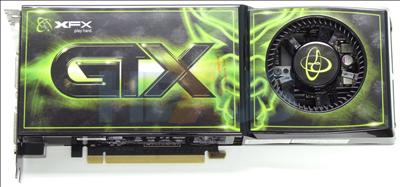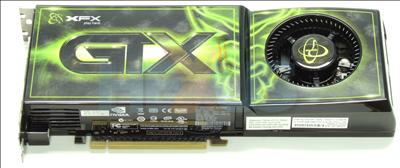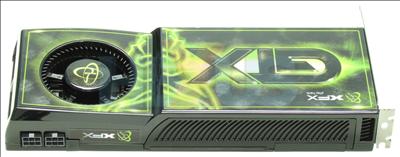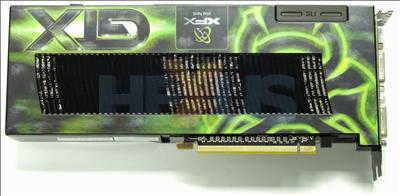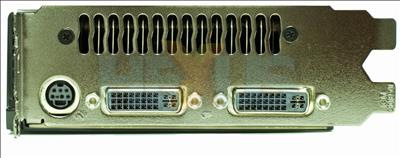Hardcore time
GeForce GTX 260
Being the full-fat GeForce GTX 280's smaller brother, GTX 260 is, shall we say, performance-hampered by the usual architectural chops that result from GPUs on a particular wafer that don't quite make the A* grade.As such, GTX 260 is bereft of two of the 10 SIMD arrays, losing 48SPs, down to a toal of 192. Commensurately, it also loses two texturing units, one ROP partition, and a 64-bit memory channel to them, cleaving it down from 448-bit.
Appreciating the lopping-off of a memory channel and keeping the DRAM count consistent, the GTX 260 ships with an 896MiB frame-buffer, which should be enough for games' requirements for a while to come.
Referencing clockspeeds, GTX 260 runs at 576/1,242/2,000MHz for the core, shader, and memory, respectively, compared with the GTX 280's 602/1,296/2,214MHz.
In short, less shading, texturing and memory bandwidth, to the tune of around 25 per cent. As the vital stats on a same-architecture model predicate performance, we can surmise that GTX 260 will benchmark at between two-thirds and three-quarters of its bigger brother.
Confused? Head on over to the original review that contextualises the above information.
The cost benefit is an etail price of around £250 for a default-clocked model, which, as we've noted, is around £150 cheaper than the big, bad GTX 280.
Knowing the architectural chops, we reckon that it makes a lot more sense for the enthusiast who wants performance and some semblance of value-for-money.
XXX lovin'
We like the Hulk-esque look of the XFX card. The PCB and cooler are exactly the same as the GTX 280's, extending down to the quiet fan and semi-enclosed heatsink.
GeForce GTX 260 isn't as power-hungry as its bigger brother, drawing around 182W under peak load, which is some 54W lower than GTX 280.
Thinking about it, a heatsink primarily designed for a GPU that consumes a whole lot more watts should lead to some nice overclocking numbers on the GTX 260. That's why the majority of partners will launch pre-overclocked parts, too.
Partners have been given significant leeway in releasing overclocked cards right out of the gate, and employing such a move gives them differentiation and a reason to apply a price premium.
XFX ships its XXX Edition with BIOS-configured frequencies of 640/1,363/2,300MHz, representing 11/9.7/15 per cent increases over stock. Indeed, they're higher than GTX 280, but, as we know, the internal guts of the GPU have been stricken to ensure that it meets a certain price-point and doesn't readily impinge upon '280's performance.
XXX GPUs are hand-picked from the very best yields, according to XFX. We have no direct method of verifying the veracity of the statement, but looking at overclocking should provide indirect support of this assertion.
The lower power requirement of the '260 is physically manifested with two six-pin PCIe power connectors, compared to the big boy's eight-and-six-pin arrangement.
To the right of the power ports is the board-mounted S/PDIF-in connector. Hook this up from your motherboard's audio and it will pass through to the DVI ports on the back, which, via an HDMI-to-DVI adapter, gives you an external A/V feed.
Looking at the back, two SLI fingers open up three-board SLI, should you be flush enough to contemplate such a graphics subsystem.
The mini-DIN socket is TV-out-only. The single-GPU GeForce GTX 200-series doesn't suffer from the display-related foibles that afflicted the twin-GPU 9800 GX2. Two dual-link DVI ports, as you may know by now, are standard fare.
Summary
XFX's GeForce GTX 260 XXX Edition should benchmark at around 10 per cent higher than a stock-clocked model, once gaming becomes bound by the GPU.
Stock-clocked versions are available for £250; this version retail for £283 - a just-over linear increase with clockspeeds taken into account.






